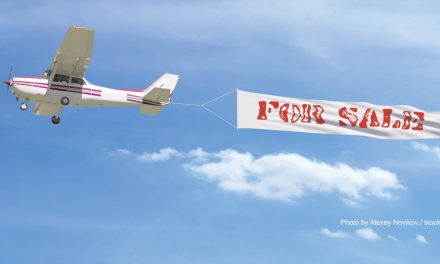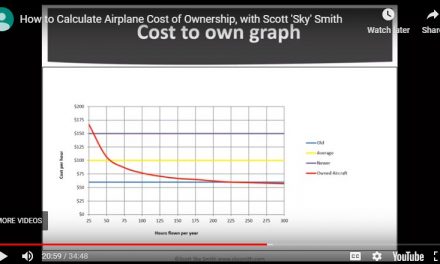How Improvements Affect Insurance
It’s nearly AirVenture time again. If you’re a diehard aviation event fan, you’ve probably been to Sun ’n Fun in Lakeland, Florida. I went, and there was a tremendous number of new things to look at. And I’m not just talking about aircraft. There are engines, performance upgrades, and avionics. Sun ’n Fun was great, but AirVenture is going to be as great or better. Okay, maybe it’s not really better. It’s just bigger. There’s a reason it’s called the mecca for airplane wingnuts. Besides being a place to look at new aircraft, AirVenture is also a venue to shop for modifications and upgrades all in one place — and you might get a sale price at the same time!
The Impact of Modifications and Upgrades on Insurance
What happens to your insurance if you do modify or upgrade your aircraft? What if you install new wing tips, a STOL kit, speed kits, a larger engine, or even convert the aircraft to a different landing gear configuration? Or what if you add new avionics? Does your insurance company care? Maybe! If the original type certificate is modified or the performance parameters have been changed, you’re looking for changes in the insurance.
If you install Supplemental Type Certificated (STC) modifications to increase the performance, such as wingtips or cowling mods, the biggest changes will be in the value of the aircraft itself. Generally, most modifications will increase the value but not much else. How much will the value increase? No one really knows. If it’s an established modification, it might be listed in the price guides, but don’t hold your breath. Typically, it’s just based on how much money the modification or upgrade costs.
Your Plane’s Value to You
Most aircraft seem to be selling at ridiculously high prices, often higher than the base book value plus any extras. Many of the aircraft on today’s market still need upgrades, paint, interior, and avionics to be competitive. That means you really need to be cognizant of what you’re getting into. Pay too much for an aircraft and add too many improvements, and potentially you’ll be “upside down” on the price. I’ve said many times, however, that if you’re okay with the price you paid and you’re happy with your aircraft, don’t let me or anyone else tell you it’s a bad deal. It’s your airplane. In my experience, there are always going to be pilots/owners who want to make sure I know they could have gotten a better deal than me. That’s OK. Don’t let anyone make you feel guilty for what you paid.
Determining Your Plane’s Market Value
One way to establish if improvements are worth it is to use book values to establish the price of your aircraft. Add as much as possible from the book, using all the extras available. Review this every year or anytime you make a change to the aircraft. If you add radios, review the price. If you add a speed kit, STOL kit, or new prop, review the price. Always keep track of the value, because it’s important if you’re buying insurance or thinking of selling. Underwriters will only pay the maximum agreed upon hull value you’ve paid for in the insurance policy.
Making Significant Modifications
If you change the characteristics of the aircraft, such as converting a tri-gear to a taildragger, expect your insurance premiums to increase. If you increase the engine size, look for the premiums to go up. Any major modification could increase the premium rate. If you add too many mods at once, the price might increase tremendously over the book value of the aircraft, and the insurance company will not want to insure the aircraft for the full amount. In that situation, the aviation insurance underwriter might put a maximum hull value they will consider, or the underwriter might require copies of invoices and detailed descriptions of the aircraft modifications and equipment.
For an example, take an older Cessna 150 — say a 1966 model. The aircraft currently might have an average value of about $30,000. But to this, you add a complete basic IFR panel, new interior, new paint, glass, and a new engine and prop. No expense spared. Blood, sweat, tears, and lots of money! But because of the aircraft’s age, most insurance companies wouldn’t want to provide coverage for more than $50,000. This probably doesn’t come close to the true value of the aircraft.
But look at it from an insurance claim department’s viewpoint. They’ll just see the fact that it’s a 1966 Cessna 150. When they collect the salvage, they have to consider what they can sell to recoup some of the money they paid out. If it was substantial damage like a prop strike or nose gear, firewall, or wing or tail damage, they only have the avionics and a few straight airframe parts to sell. The new paint or interior won’t really matter. And a brand-new engine may have broken internal parts. So in the grand scheme of things, it’s just an older Cessna 150 with a book value of $30,000. And if you had a tailwheel conversion, your investment went up even more, but the salvage value still didn’t change.
This doesn’t mean you can’t get a higher price. You might be able to get a higher value depending on the underwriter. Your broker will have to work with the right underwriter at the right company, and the insured will need to provide documentation for the value of the changes.
Insurance Coverage for Avionics
Adding new paint or installing a new interior is expensive. It does make an aircraft look better and sell easier. But it’s also a labor-intensive improvement. Insurance underwriters don’t like to pay for the labor. So all the money spent on paint and interior is mostly for the owner. Remember what I said in the example above. In the salvage yard, it doesn’t really matter how nice the paint or interior is, it’s still a wrecked airplane.
Avionics are a bit different, however. They have a component value and a labor value. Panel upgrades may be one of the biggest expenses in an airplane, aside from the engine, so when establishing the value of your aircraft for the insurance policy, always consider the avionics. If the price of your aircraft according to the price guidebook is $100,000, and you add a new radio stack that’s worth $35,000, does that mean your aircraft is worth more? Probably, but the base price in the book uses a standard avionics package. If you have a Cessna 172 or Piper Cherokee 140 with a standard IFR package, the book value might not increase compared to your actual investment.
Typically, new radios can add to the price of the aircraft, but not the labor. If you were to have a claim, the adjuster would have to determine the best deal for the company and the customer. That best deal doesn’t include the labor to install the avionics.
Don’t undervalue your aircraft. Make sure you insure it at a value that’s high enough to cover the replacement of the avionics. If you have an extensive avionics package, you could easily have $30,000 in radios only. Everything that is permanently installed has a value. But the difference between installed and portable is an important distinction. Most companies will not provide coverage for items that aren’t permanently installed in an aircraft.
That means your handheld GPS, handheld transceiver, or portable intercom might not be replaced by your aviation insurance. Most companies have a limit for non-installed extras, like headsets.
Check your policy for extra coverage or call your broker and have him check your policy. Some companies will cover headsets if they’re plugged into permanently installed jacks. Others will cover the handheld if it has an external antenna. An example of the type of language you might see in a policy:
Equipment Coverage
Physical Damage Coverage is amended to include the following portable and/or additional aircraft equipment for which you own or lease.
Type of Equipment
- Portable Avionics: $1,000 Occurrence Limit.
- Headsets, Safety Equipment: $1,000 Occurrence Limit.
- Aircraft Spare Parts: $25,000 Occurrence Limit.
If you have high-value portable equipment like two brand-new Bose headsets, will $1,000 cover the replacement? Probably not. But one company offers up to $3,000, so make sure you check your policy. Better yet, if you can, don’t leave anything in the plane that can be stolen. If you don’t have any expanded coverage for portable equipment, if you lose a portable or it’s stolen, you lose your money. That is, unless your homeowner insurance policy provides coverage.
Some homeowner policies will cover certain types of extras. Of course, there are stipulations. If the items are for business use, they would need to be covered under a business policy. If they’re for personal use, they might be covered under your homeowner policy. But check your policy. Often, if it’s aviation specific, the homeowner or the auto policy will not provide coverage.
After all that, if you add avionics or paint or any other modification, it’s worth increasing your insured value. Aircraft values seem to be slowing their increase, but adding or changing anything still adds value.
THINGS TO REMEMBER
- How much value you can add is between you and the insurance underwriter. The underwriters have maximum limits, and they might not meet your expectations.
- Labor can’t be included in the increases.
- Have “proof of value” to submit. This will include aircraft and engine hours, equipment lists, receipts for upgrades, modifications, and components (not including labor).
- Find and note your portable devices coverage limits in your policy. If you don’t have any coverage, see if your broker can add them.
- Make sure you have a list of portable devices, including serial numbers, make and model, and when you bought them.
- See if your auto or homeowner policy will provide coverage for your portable items.
- Don’t leave anything in your airplane that can be stolen.





